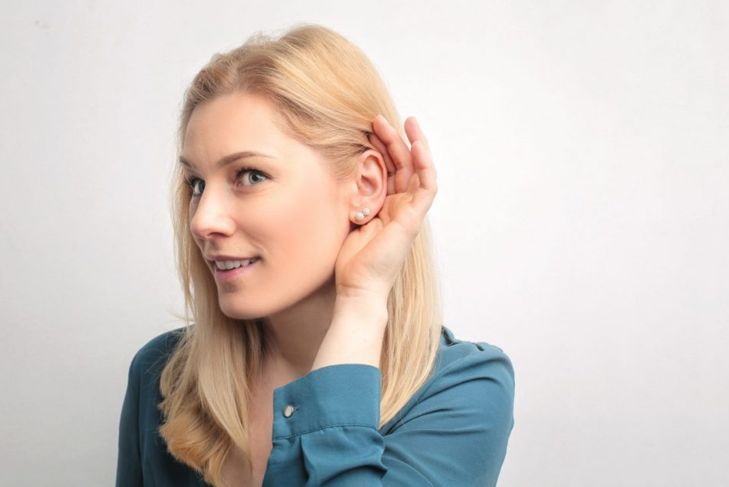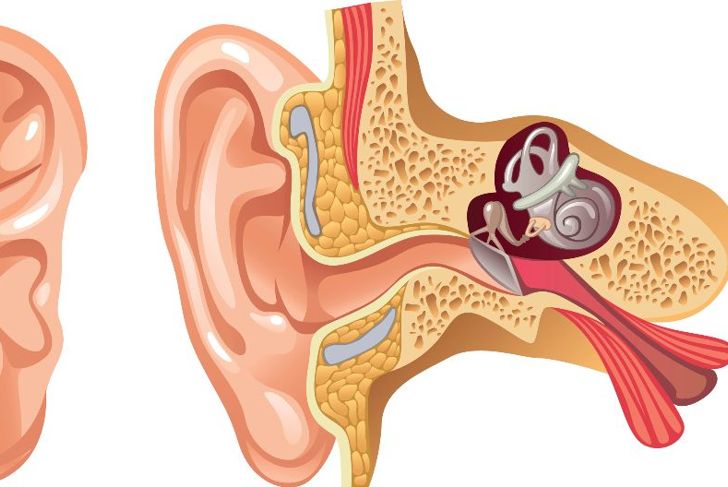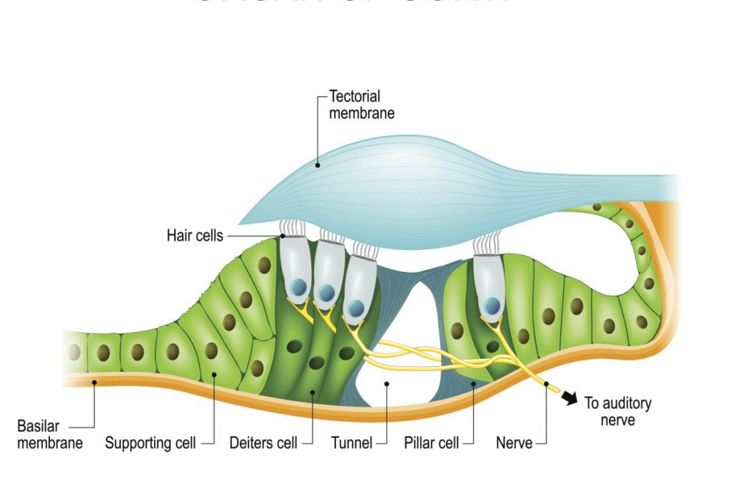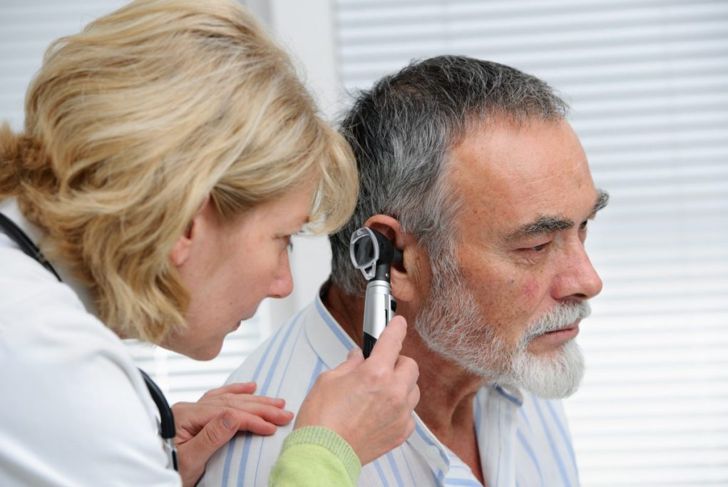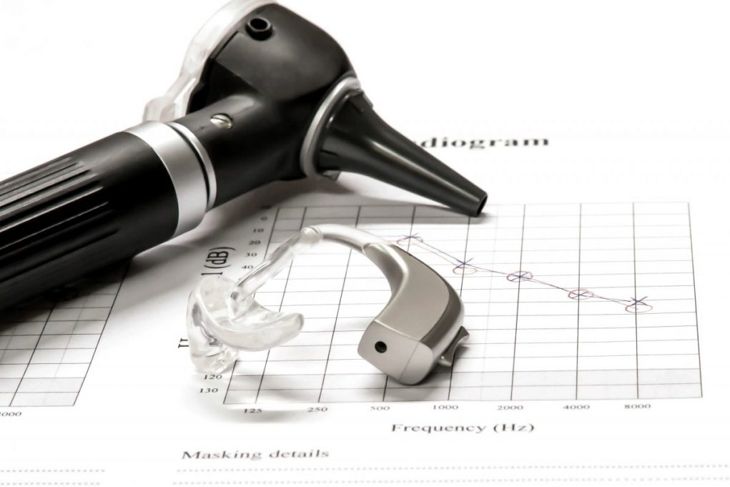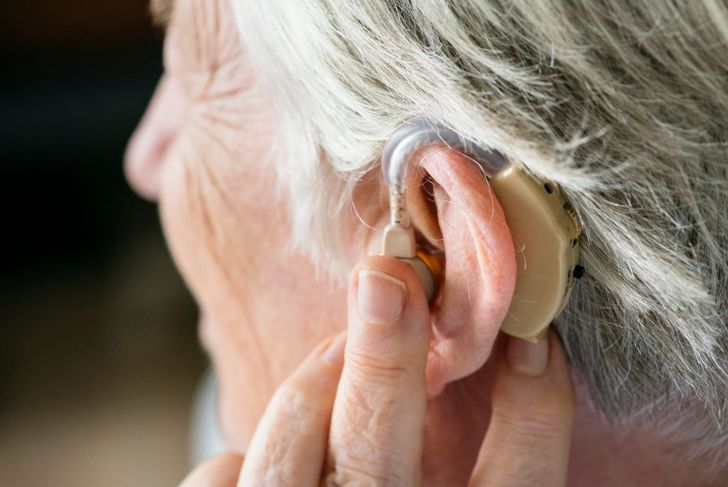Presbycusis is the medical term for age-related hearing loss. It is a common condition that affects roughly one-third of Americans between the ages of 65 and 74. This number jumps to approximately 50 percent beyond the age of 75. There are four primary types of presbycusis with two sub-categories. The primary causes of hearing loss are heredity, medical disease, and environmental factors. The condition slowly affects your hearing and occurs in both ears at roughly the same speed of degradation.
How People Hear: Sound Waves
To understand hearing loss, first we must understand the basics of hearing. Essentially, hearing is the changing of sound waves in the air into electrical signals that are carried to the brain by the auditory nerve. Sound waves travel through the ear canal into the eardrum. Then, the eardrum vibrates its understanding to the three tiny bones of the inner ear: the malleus, incus, and stapes. These bones couple their message from the eardrum with the fluid vibrations of the snail-shaped, fluid-filled, cochlea of the inner ear. The cochlea is split in two from beginning to end by an elastic partition called the basilar membrane. The basilar membrane is important because it is the foundation on which the rest of the hearing process is built.
How People Hear: Interpreting Vibrations
The vibrations sent by the malleus, incus, and stapes make the fluid in the cochlea to ripple, forming a wave along the basilar membrane. The sensory cells on top of the basilar membrane essentially surf the message forward on that wave. After this, hair-like projections called stereocilia to bend when they come into contact with the inner ear; this prompts them to open and allow a flood of chemicals carrying the message to rush into the hair cells. This creates an electrical signal which is handed off to the auditory nerve and directed to the brain. After that, the brain turns this signal into what you know as sound.
Hair Cells Don’t Grow Back
Age-related hearing loss is difficult to distinguish from damage to the inner working of your ears over a lifetime. Exposure to noise in the long term is different than the noise-induced hearing loss, which is a contributing factor in presbycusis and is caused by sounds that last too long or are too loud, damaging those essential hair cells. Additionally, diabetes and high blood pressure, along with medications such as chemotherapy drugs, can contribute to presbycusis.
Sensory Presbycusis
The loss of hair cells in the Corti, a part of the cochlea that produces nerve impulses from vibrations, leads to sensory presbycusis. First, the base of the cochlea is affected which ultimately makes its way toward the innermost portion (tip) of the cochlea. One of the first things you lose is the ability to hear high-frequency sounds. However, speech discrimination generally remains intact. This means that you may hear your family and friends just fine but begin to lose your ability to hear birds singing in the trees. This can begin in your 30s and 40s and continues to worsen with age.
Sensory Presbycusis
You begin life with a finite number of nerve cells in the cochlea and auditory pathways. Each year, this number is reduced. When you’re left with 50% or less, you fulfill the criteria for neural presbycusis. The effects are not noticeable until later in life and severity is likely genetically predetermined. Unlike sensory presbycusis, neural presbycusis dramatically affects speech discrimination.
Metabolic Presbycusis
Atrophy of the stria vascularis causes metabolic or stria presbycusis. Among other things, the stria vascularis is responsible for supplying blood to the inner ear and keeping the cochlea in balance. Since this affects the entirety of the cochlea, frequencies are affected equally, but speech discrimination is not largely affected. This progressive version is likely hereditary, as well.
Mechanical Presbycusis
Mechanical presbycusis is a thickening and hardening of the basilar membrane of the cochlea. It is also called cochlear conductive presbycusis. Additionally, the basilar membrane is instrumental in supporting the Corti in the cochlea, as well as turning sound vibrations received from the bones of the inner ear into the electrical signals the brain needs to interpret sounds. This slowly progressive presbycusis is known as a sloping high-frequency sensorineural hearing loss.
Mixed Presbycusis
While technology has improved to help doctors determine the type of age-related hearing loss their patients are experiencing, sometimes the only option is mixed presbycusis. This means the doctor has found evidence of two or more types of hearing loss.
Indeterminate Presbycusis
In about 25% of cases, the doctor is well aware of presbycusis’ presence, but none of the characteristics of the four primary types is present. In cases like this, a good audiologist and hearing aid specialist will become more important in your treatment and allow you to begin dealing with your future diagnosis.
Inevitability of Presbycusis
Finally, it is important to realize what treatments are available. Though losing your hearing is never an enjoyable experience, there are myriad treatment options available to you, and every year the treatments become more advanced.

 Home
Home Health
Health Diet & Nutrition
Diet & Nutrition Living Well
Living Well More
More